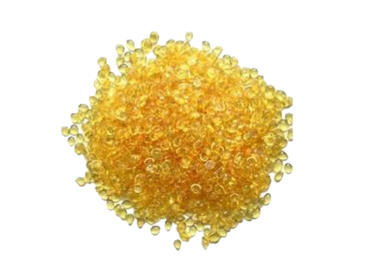001×4 Styrene series Gel Strong Acid Cation Exchange Resin
About this Product:

The 001×4 is a strong acid cation exchange resin with a sulfonic acid functional group. The resin is based on a styrene-divinylbenzene copolymer with a 4% crosslinkage. Performance-wise, it is an effective alternative to products such as Amberlite IR-118.
At a Glance
The 001×4 is a strong acid cation exchange resin with a lower crosslinkage (4% DVB) compared to the more common 7-8% resins. This lower crosslinking gives it unique properties that make it particularly well-suited for specific applications.
Key Applications:
- Extraction of Antibiotics and Pharmaceuticals: The lower crosslinkage provides a more open polymer matrix, which allows larger organic molecules, such as those found in antibiotics and other pharmaceuticals, to diffuse into the resin beads more easily. This makes it highly effective for the extraction, separation, and purification of these high molecular weight compounds from solutions.
- Preparation of Pure Water or High-Purity Water: Like other strong acid cation resins, it is used for the removal of cations (e.g., Na+, Ca2+, Mg2+) from water sources. It is often used as part of a two-stage demineralization system to produce high-purity water for various industrial and laboratory processes.
- Water Softening: While a 7-8% crosslinked resin is more common for standard water softening, the 001×4 can also be used. Its lower crosslinking may offer faster exchange kinetics, which can be advantageous in certain flow conditions, but it may have lower physical strength and capacity compared to higher crosslinked versions.
- Catalysis: The sulfonic acid functional groups in the resin can act as a solid acid catalyst. The 4% crosslinkage provides a less rigid structure, which can be beneficial for certain organic reactions where access to the catalytic sites is critical for larger reactant molecules.
- Separation and Purification of Biochemicals: The more open structure of the 4% crosslinked resin makes it suitable for the separation and purification of various biochemical compounds, including amino acids, where the size of the molecules is a significant factor.
Physical and Chemical Properties:
Information | Specification |
Polymer Matrix Structure | Crosslinked Polystyrene Divinylbenzene |
Physical Form and Appearance | Golden yellow color Spherical beads |
Functional Groups | R-SO3¯ |
Ionic Form, as shipped | Na+ |
Total Capacity, Na+ form, wet, volumetric | ≥1.6 eq/l min |
Moisture Retention, Na+ form | 56-63% |
Particle Size Range | 0.3mm-1.2mm |
<0.3mm (max.) | 1% |
Uniformity Coefficient (max.) | 1.6 |
Effective size | 0.4-0.7mm |
Reversible Swelling (Na+ → H+ (max.)) | 13% |
Shipping Weight (approx.) | 760 -810g/l |
Specific Gravity, moist Na+ Form | 1.25 |
Temperature Limit | 120°C (250 °F) |
pH Range, Stability | 0 – 14 |
Suggested Operating Condition
Maximum Temperature Na+ Form H+ Form | 120°C (248oF) max. 100°C (212oF) max. |
Backwash Rate | 25 to 50% Bed Expansion |
Regenerant Concentration Hydrogen Cycle Sodium Cycle | 3% HCl or 2 to 3% H2SO4 6% to 8% NaCl or 3% NaOH |
Regenerant dosage HC1 or H2SO4 NaCl NaOH | HC1 or H2SO4 vol:resin vol =3:1 NaCl vol:resin vol =2:1 NaOH vol:resin vol =3:1 |
Regenerant Flow Rate | 2 to 4 BV/h |
Regenerant contact Time | At least 40 minutes |
Service Flow Rate | 10-25m/h |
Check also Strong Acid Cation Resin Variants
Other Selections Of Ion Exchange Resins
Achieve superior filtration results, enhanced product purity, and consistent output quality. Our meticulously engineered media delivers optimal performance, reducing waste and improving your final product. Partner with us to unlock higher standards and drive tangible improvements in your processes. Experience the difference quality media makes.
